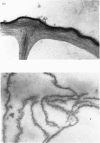Abstract
The synthesis of ethylene by cauliflower floret tissue was increased when the tissue was inoculated with the soft-rot bacterium Erwinia carotovora. This effect was clearly associated with the production of pectic enzymes by the micro-organism. These enzymes, acting together with the plant enzymes, stimulated the production of ethylene from methionine. The increased synthetic activity was due to the release and increased activity of a glucose oxidase enzyme apparently attached to plant cell-wall material and liberated by the action of pectic enzymes of the bacterium.
Full text
PDF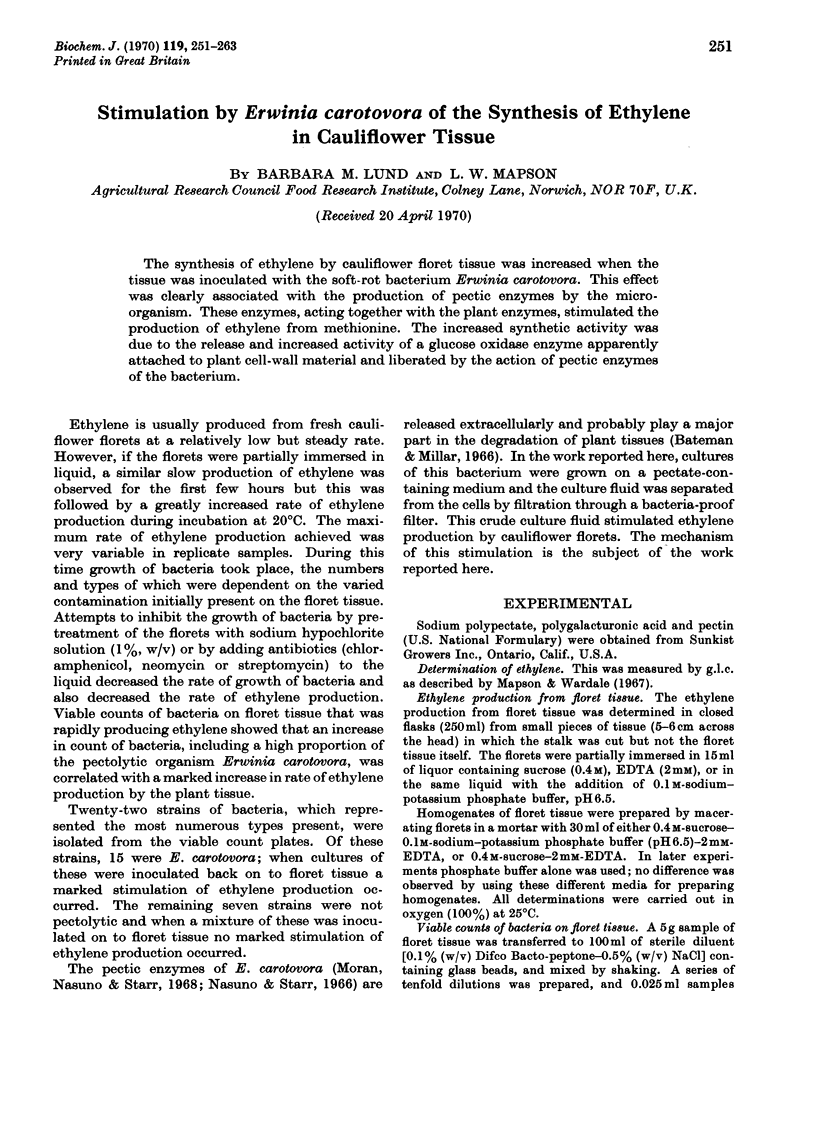
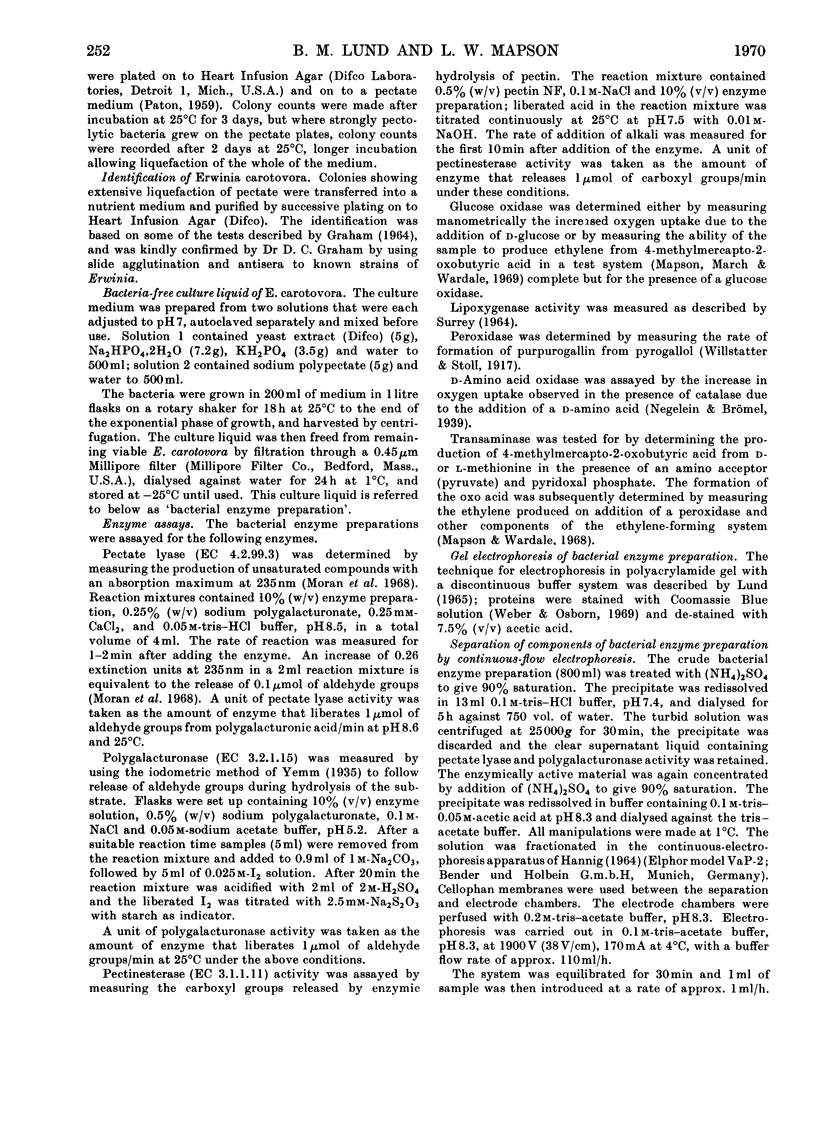
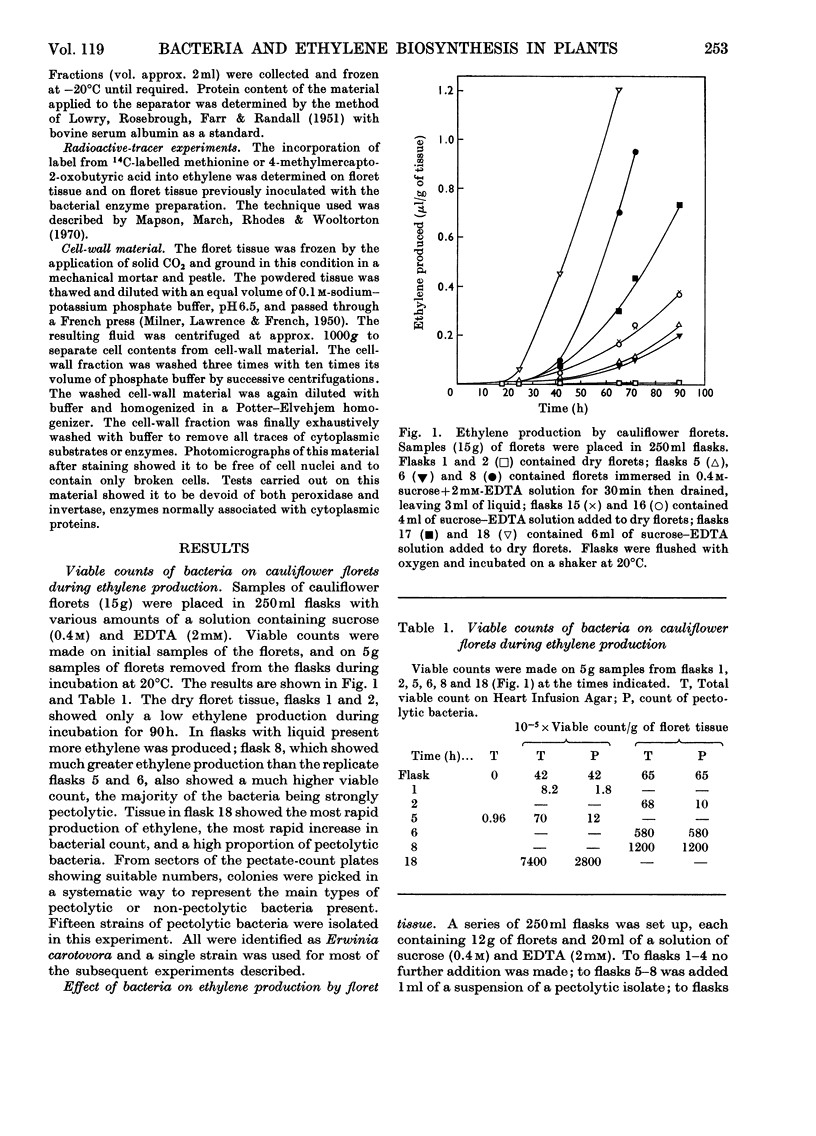
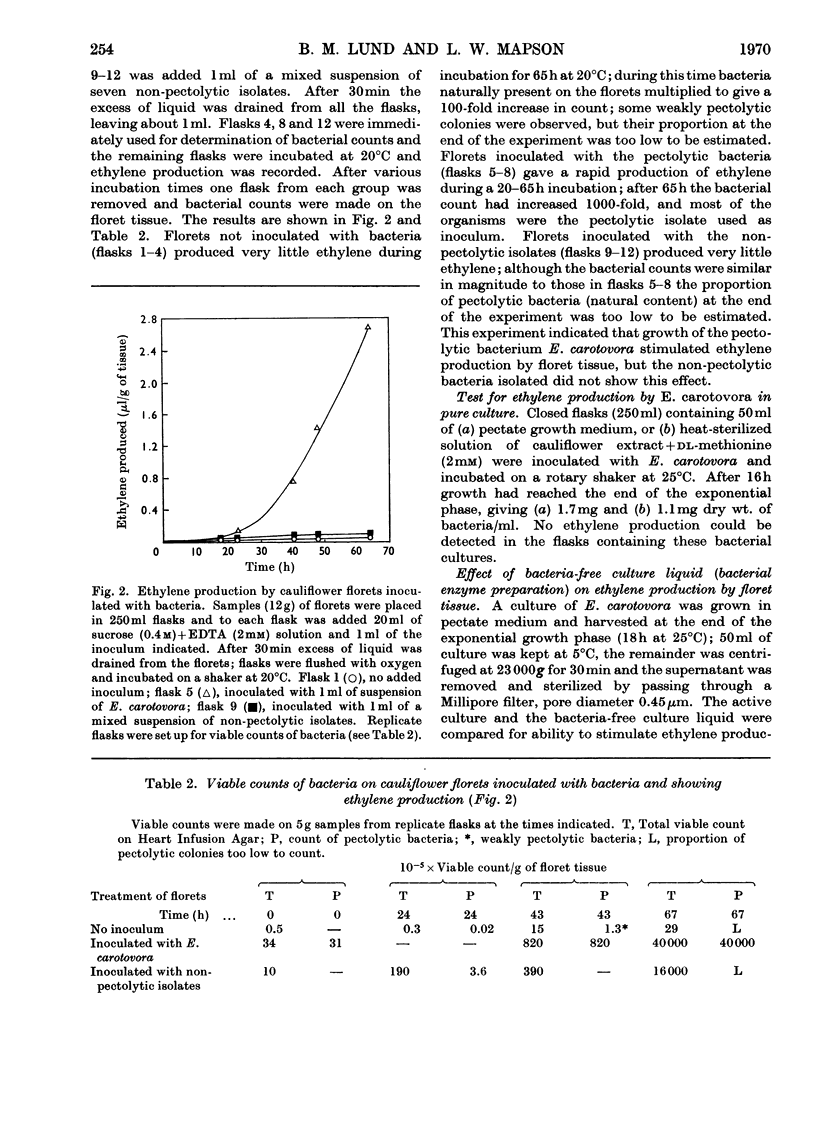
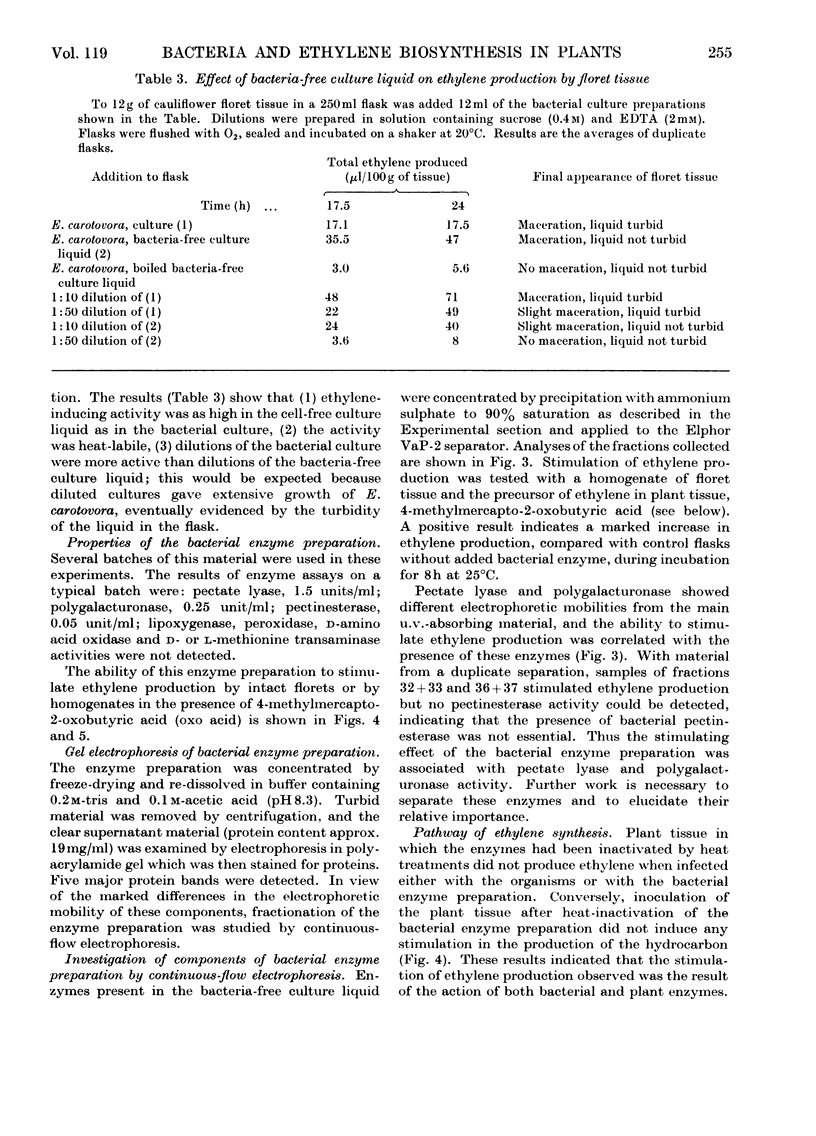
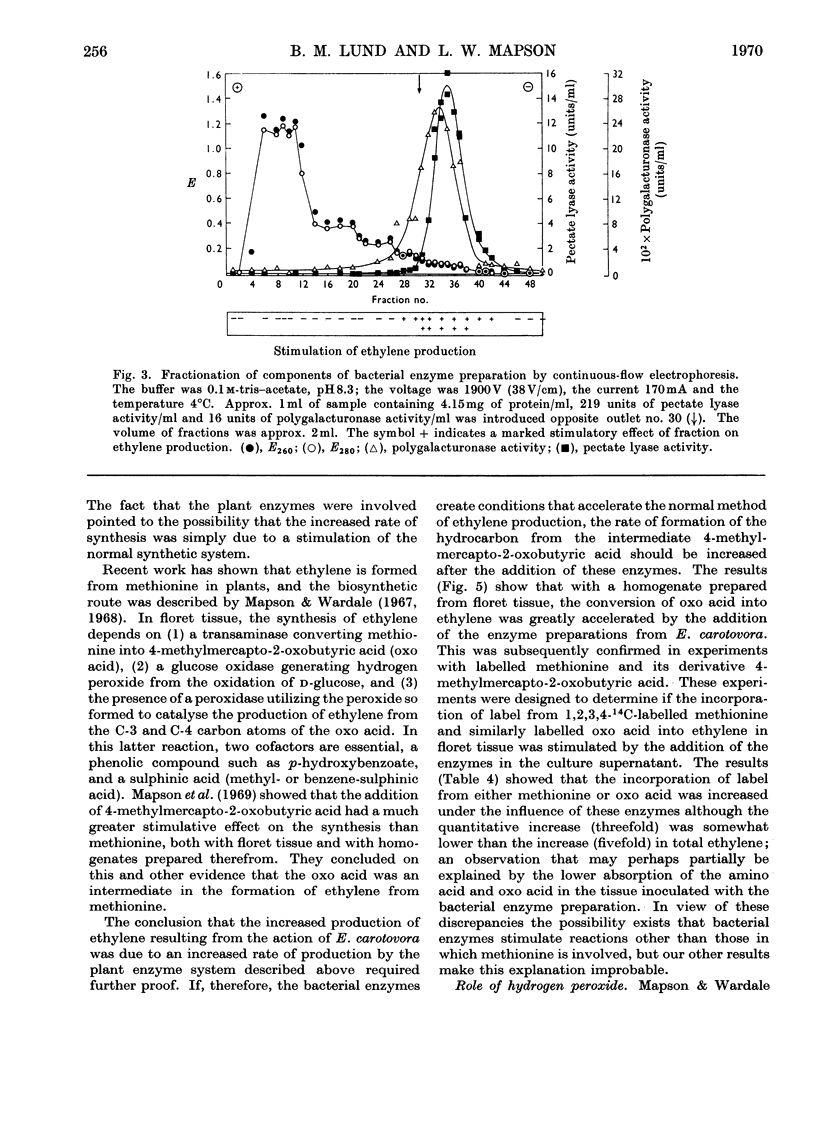
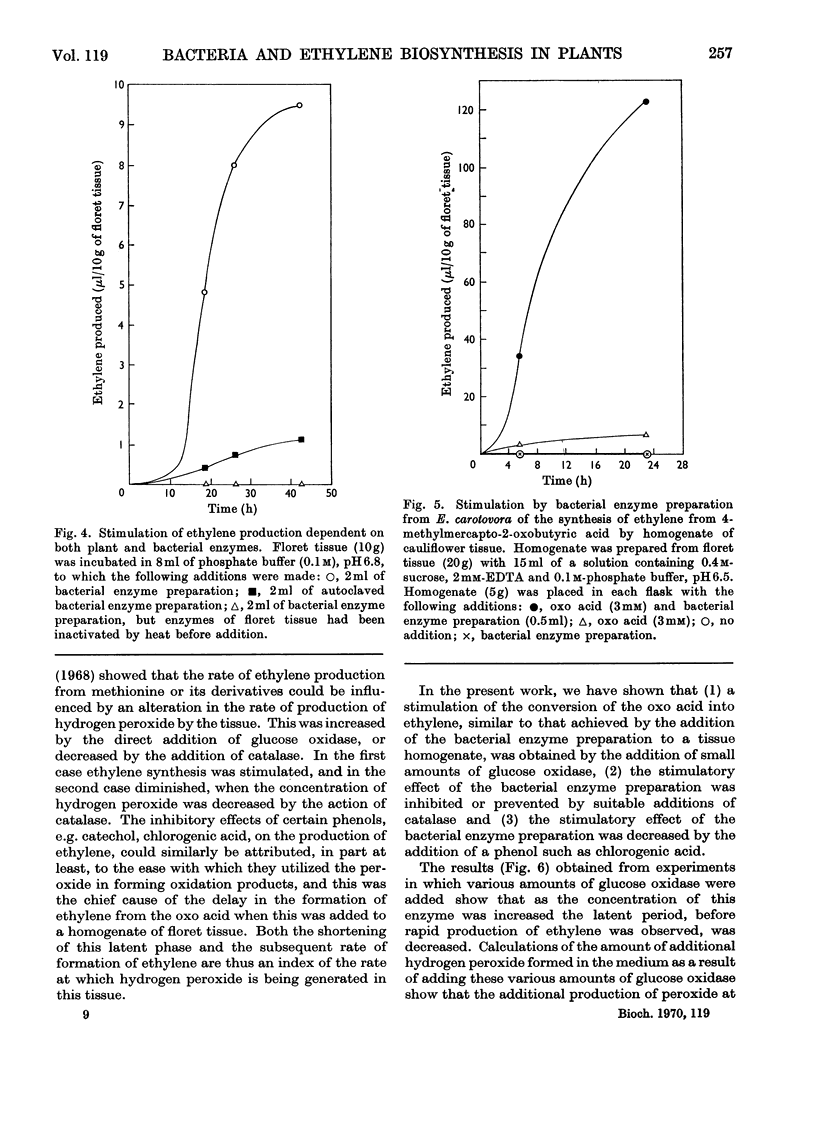
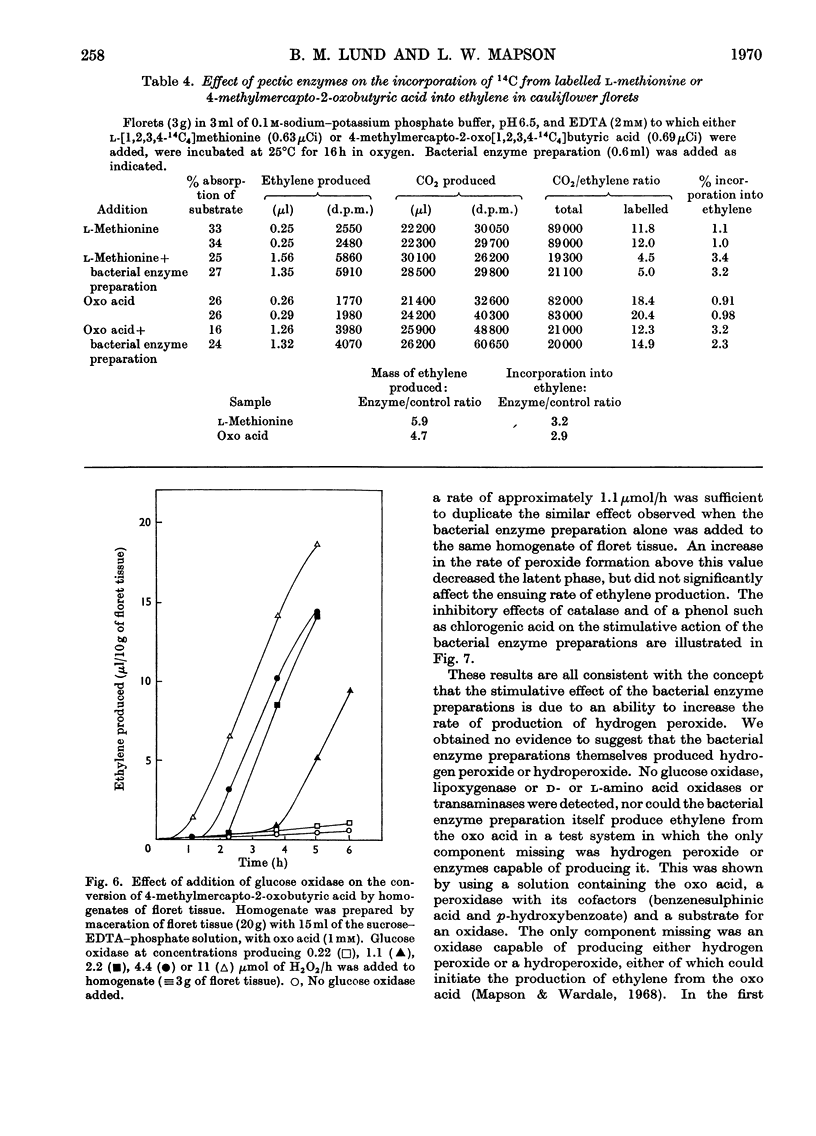
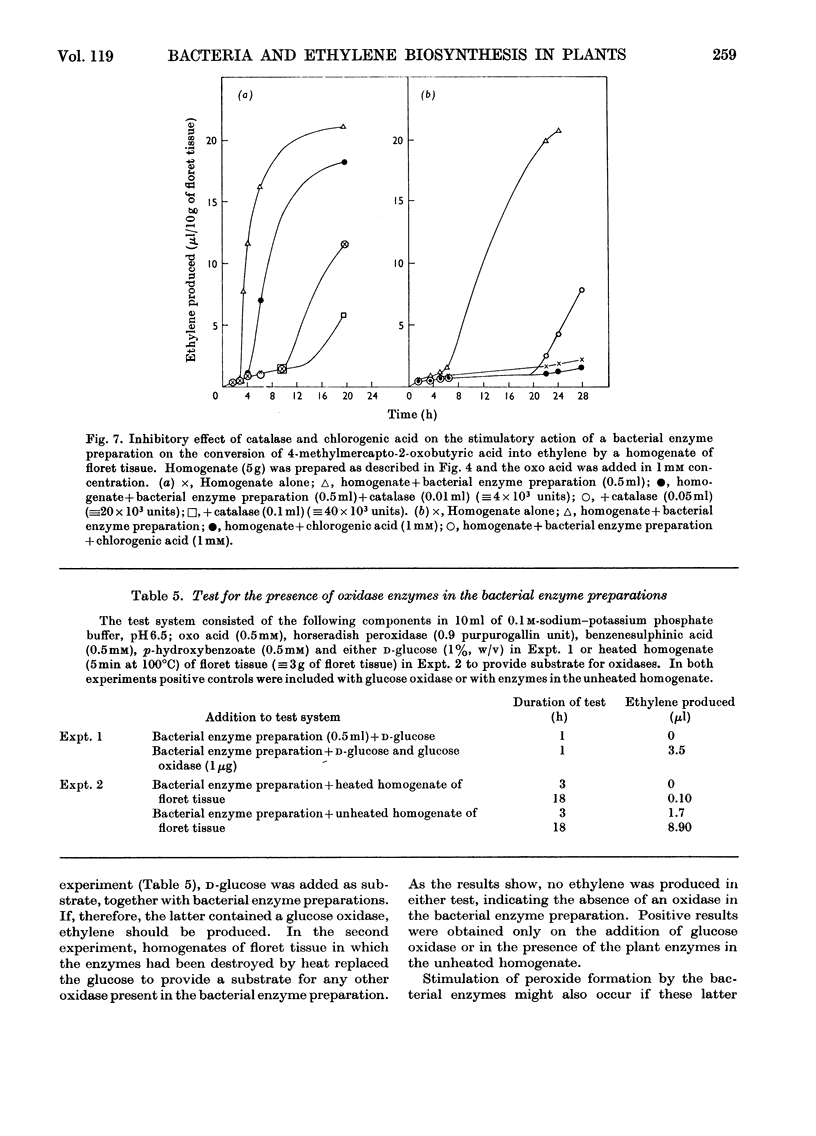
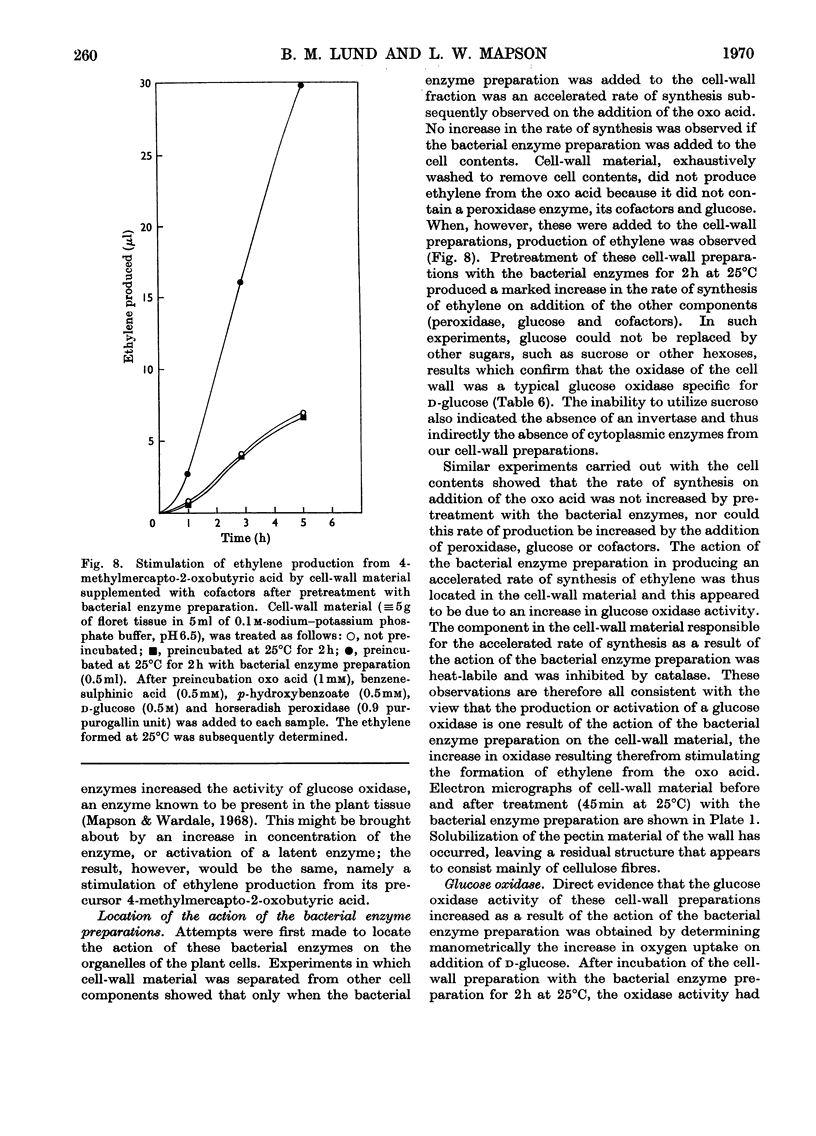

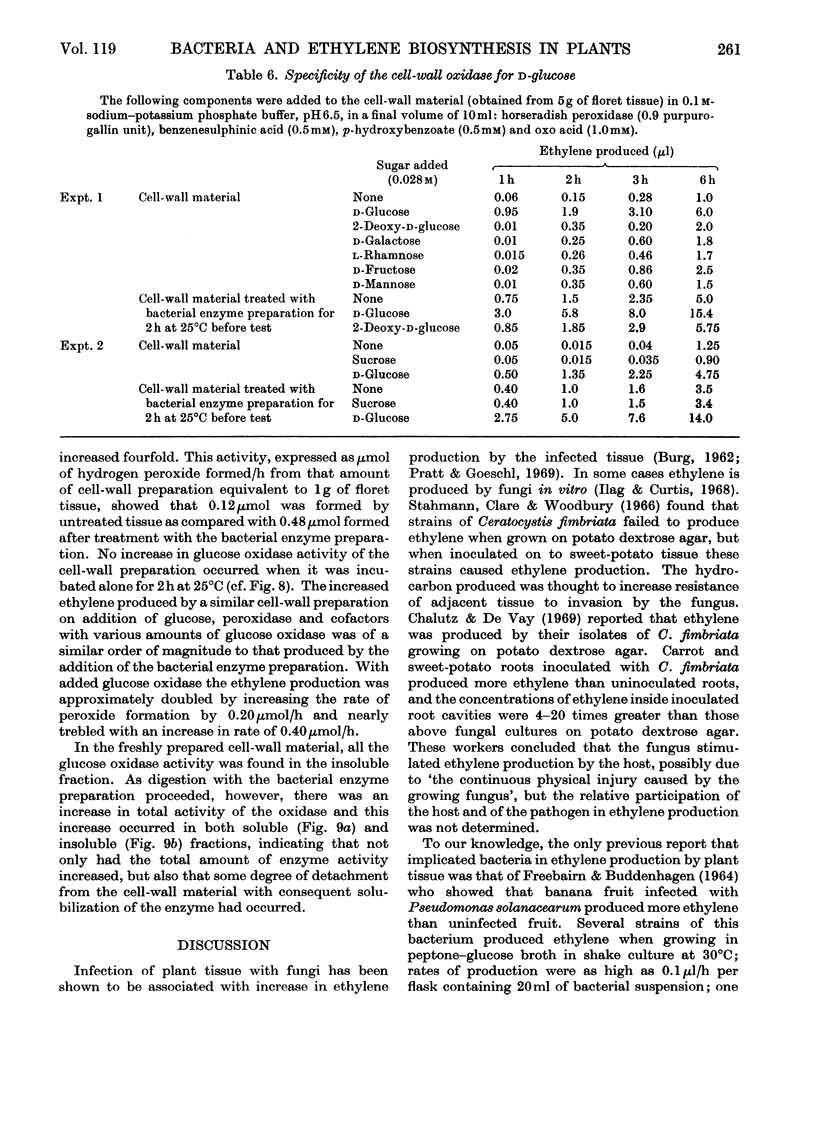
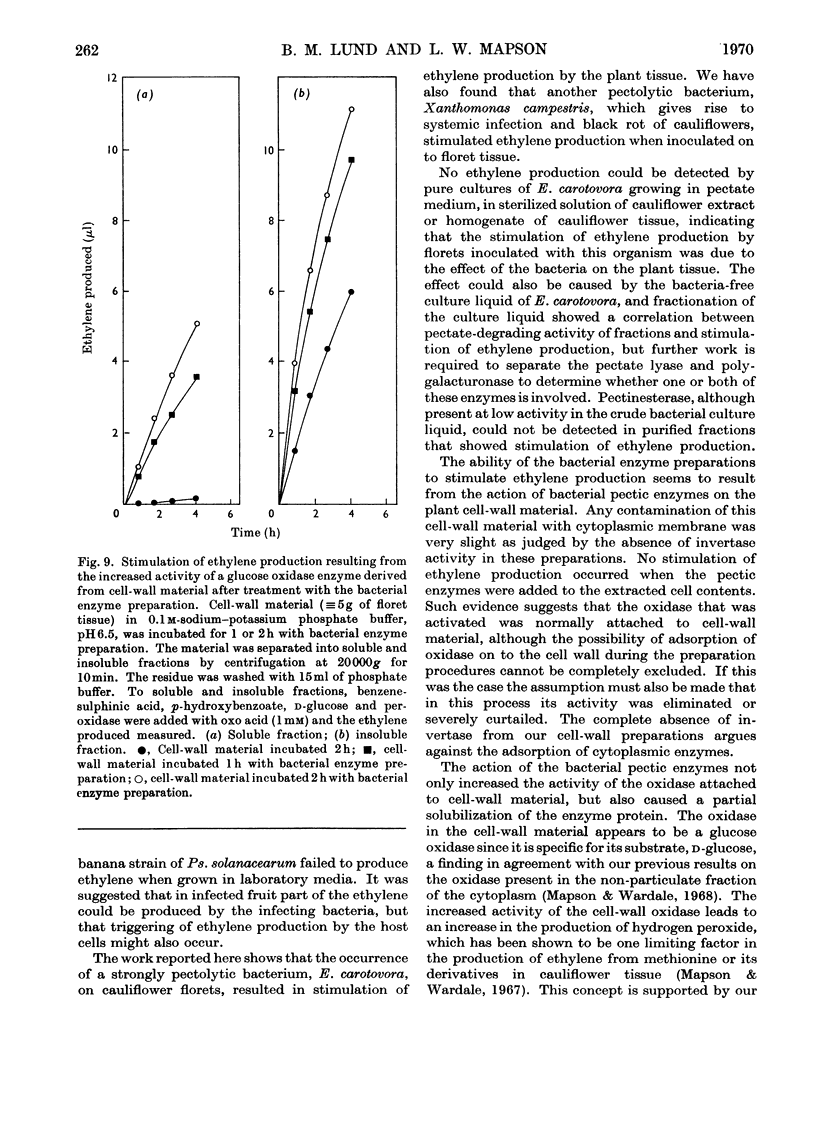
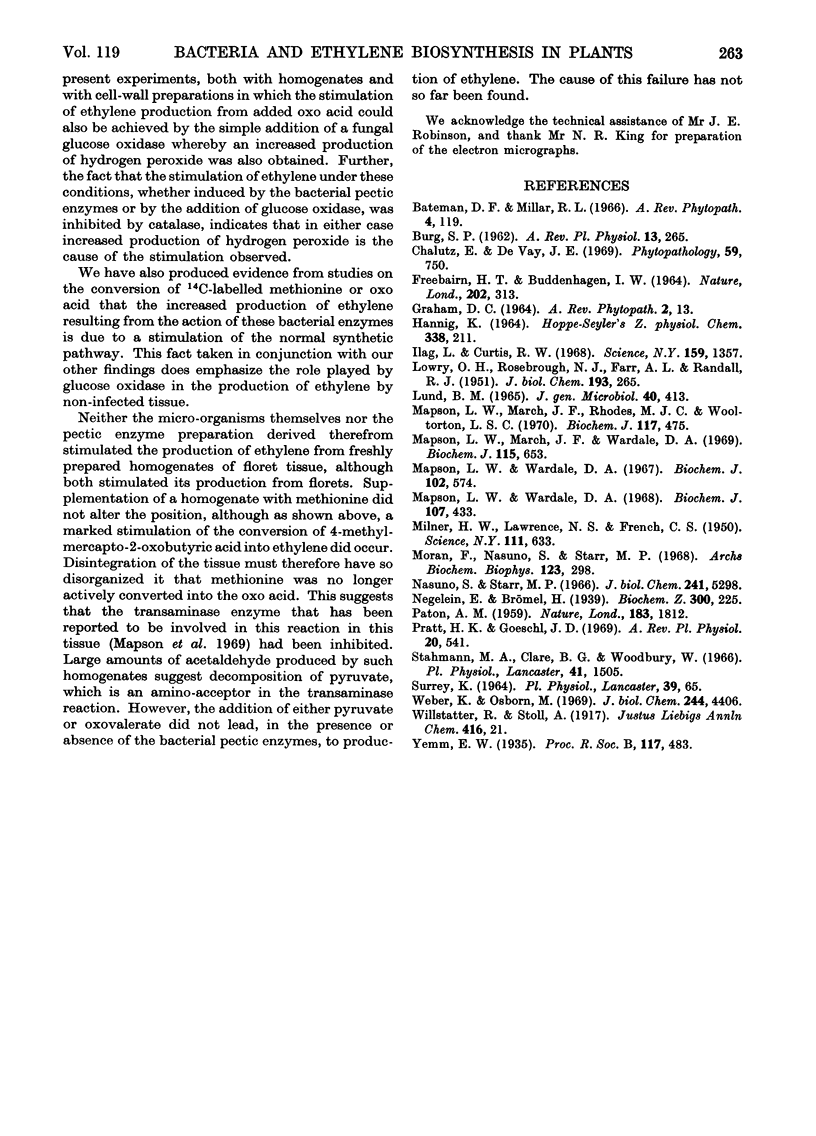
Images in this article
Selected References
These references are in PubMed. This may not be the complete list of references from this article.
- FREEBAIRN H. T., BUDDENHAGEN I. W. ETHYLENE PRODUCTION BY PSEUDOMONAS SOLANACEARUM. Nature. 1964 Apr 18;202:313–314. doi: 10.1038/202313a0. [DOI] [PubMed] [Google Scholar]
- HANNIG K. EINE NEUENTWICKLUNG DER TRAEGERFREIEN KONTINUIERLICHEN ELEKTROPHORESE. ZUR TRENNUNG HOCHMOLEKULARER UND GROBDISPERSER TEILCHEN. Hoppe Seylers Z Physiol Chem. 1964;338:211–227. doi: 10.1515/bchm2.1964.338.1-2.211. [DOI] [PubMed] [Google Scholar]
- Ilag L., Curtis R. W. Production of ethylene by fungi. Science. 1968 Mar 22;159(3821):1357–1358. doi: 10.1126/science.159.3821.1357. [DOI] [PubMed] [Google Scholar]
- LOWRY O. H., ROSEBROUGH N. J., FARR A. L., RANDALL R. J. Protein measurement with the Folin phenol reagent. J Biol Chem. 1951 Nov;193(1):265–275. [PubMed] [Google Scholar]
- Lund B. M. A comparison by the use of gel electrophoresis of soluble protein components and esterase enzymes of some group D Streptococci. J Gen Microbiol. 1965 Sep;40(3):413–419. doi: 10.1099/00221287-40-3-413. [DOI] [PubMed] [Google Scholar]
- MILNER H. W., LAWRENCE N. S., FRENCH C. S. Colloidal dispersion of chloroplast material. Science. 1950 Jun 9;111(2893):633–634. doi: 10.1126/science.111.2893.633. [DOI] [PubMed] [Google Scholar]
- Mapson L. W., March J. F., Wardale D. A. Biosynthesis of ethylene. 4-methylmercapto-2-oxobutyric acid: an intermediate in the formation from methionine. Biochem J. 1969 Dec;115(4):653–661. doi: 10.1042/bj1150653. [DOI] [PMC free article] [PubMed] [Google Scholar]
- Mapson L. W., Wardale D. A. Biosynthesis of ethylene. Enzymes involved in its formation from methional. Biochem J. 1968 Apr;107(3):433–442. doi: 10.1042/bj1070433. [DOI] [PMC free article] [PubMed] [Google Scholar]
- Mapson L. W., Wardale D. A. Biosynthesis of ethylene. Formation of ethylene from methional by a cell-free enzyme system from cauliflower florets. Biochem J. 1967 Feb;102(2):574–585. doi: 10.1042/bj1020574. [DOI] [PMC free article] [PubMed] [Google Scholar]
- Moran F., Nasuno S., Starr M. P. Extracellular and intracellular polygllacturonic acid trans-eliminases of Erwinia carotovora. Arch Biochem Biophys. 1968 Feb;123(2):298–306. doi: 10.1016/0003-9861(68)90138-0. [DOI] [PubMed] [Google Scholar]
- Nasuno S., Starr M. P. Polygalacturonase of Erwinia carotovora. J Biol Chem. 1966 Nov 25;241(22):5298–5306. [PubMed] [Google Scholar]
- PATON A. M. An improved method for preparing pectate gels. Nature. 1959 Jun 27;183:1812–1813. doi: 10.1038/1831812b0. [DOI] [PubMed] [Google Scholar]
- Stahmann M. A., Clare B. G., Woodbury W. Increased disease resistance and enzyme activity induced by ethylene and ethylene production of black rot infected sweet potato tissue. Plant Physiol. 1966 Nov;41(9):1505–1512. doi: 10.1104/pp.41.9.1505. [DOI] [PMC free article] [PubMed] [Google Scholar]
- Weber K., Osborn M. The reliability of molecular weight determinations by dodecyl sulfate-polyacrylamide gel electrophoresis. J Biol Chem. 1969 Aug 25;244(16):4406–4412. [PubMed] [Google Scholar]



